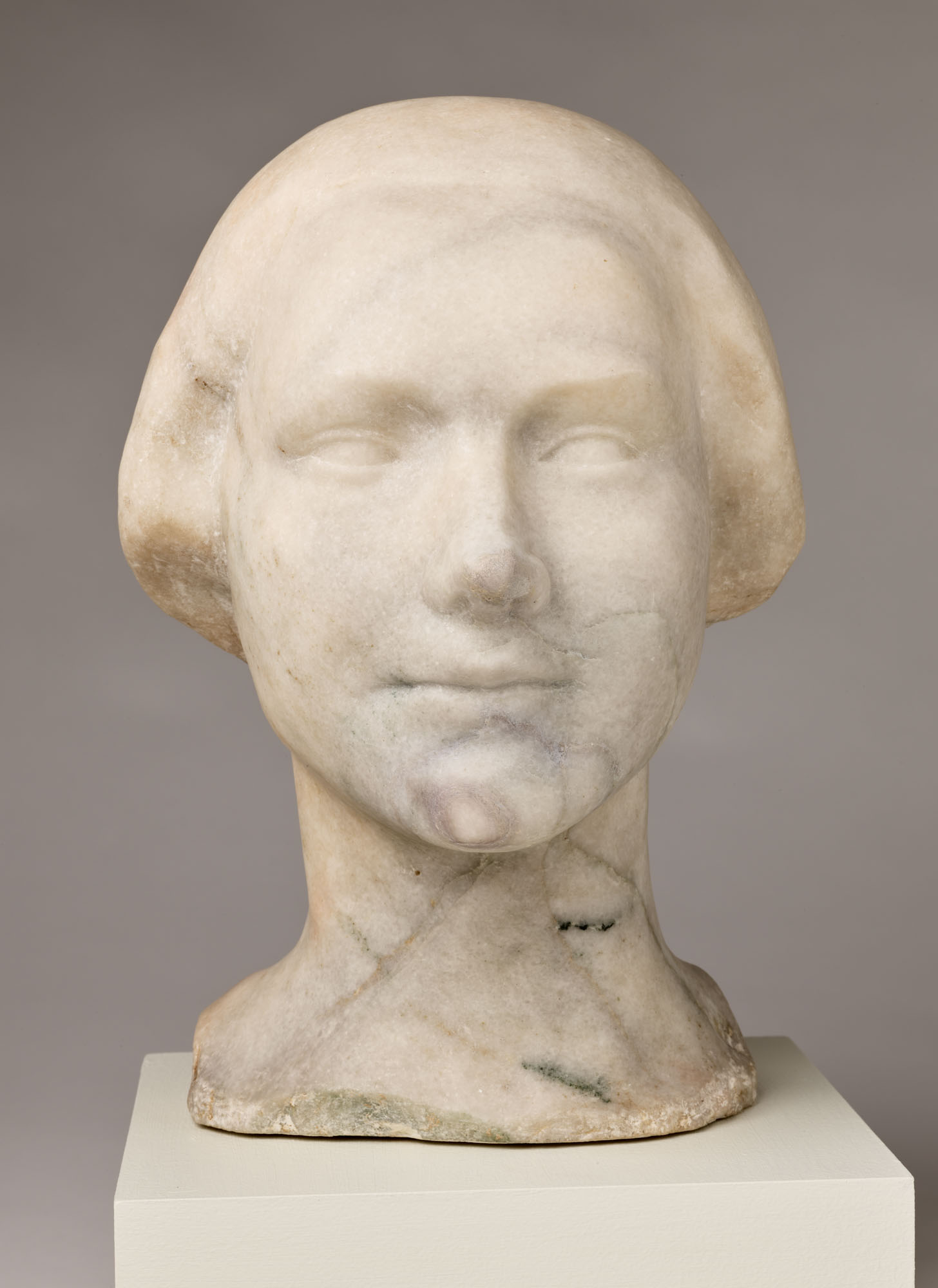True to its fierce title, Nancy Elizabeth Prophet: I Will Not Bend an Inch at the Brooklyn Museum illustrates the resilience and ingenuity of an Afro-Indigenous woman sculptor. Prophet was born in Warwick, Rhode Island, in 1890, to a Narragansett father and an African-American mother. In 1918, she became the first graduate of color from the Rhode Island School of Design, and four years later, she moved to Paris. Upon her return to the United States in 1934, she taught at Spelman College for a decade before finally moving back to Rhode Island, which remained her home until her death in 1960.
Two main galleries comprise the exhibition, one focused on Prophet’s oeuvre and the other on her everlasting impact. A row of vitrines across the first gallery showcases her surviving wood and stone figural sculptures. In 1931, she attended the Paris Colonial Exhibition, which celebrated the vast riches and far reaches of the French Empire. On view among the other sculptures, “Congalais” (1931) is a cherrywood bust representing an anonymous Maasai man from East Africa — the singular braid hairstyle is a reference to the bold warriors who resisted European imperialism. Perhaps alluding to Pan-African connections, its title refers to the Congolese people who were still facing France’s brutal imperial rule.
Prophet’s integration of historic European and African motifs is apparent in the blend of realism, abstraction, and emotional depth in her sculptures. The amalgamated forms in her work parallel the rich tapestry of cultural influences in her decade abroad, learning about Classical and Renaissance European art, as well as classical African sculpture on view in Europe. Her pair of busts both titled “Silence” (1926), sculpted in marble and then cast in bronze, have been interpreted as self-portraits most likely. The sculptures echo the smooth texture and idealized features of classical Greek sculpture, as well as the enigmatic beauty of Leonardo da Vinci’s “Mona Lisa.” Prophet was an admirer of Classical and Renaissance art, and one can see the subtle realism and complex expressiveness of these art historical antecedents in her sculptural practice.
On the gallery walls, an array of Prophet’s drawings, watercolors, and bas reliefs present different aspects of her artistic practice. In “Walk Among the Lilies” (1931–32) and various untitled watercolors, impressionistic nature scenes are enlivened by bold pops of color more typical of modernist painting. Nearby, photographs of her sculptures in glass cases reveal her meticulous documentation of her artworks. These archival images are the only remaining visual record of several of these works.

Despite her abundant practice, Prophet faced poverty and scarce opportunities throughout her career because of the racist and sexist exclusion of women of color from the art world. At times, she tried to distance herself from her Black identity by emphasizing her Indigeneity or making her gender more ambiguous by signing works as “Eli Prophet.” One accolade she coveted but didn’t receive in her lifetime was a solo exhibition. Nearly a century after she graduated from RISD, her dream has been fulfilled.
To give Black and Indigenous women their flowers while they’re with us should always be a priority, but belated recognition in the form of exhibitions like this nonetheless honors the legacies of artists who were systemically overlooked by the mainstream art world during their lifetimes.
The next gallery further explores Prophet’s career and legacy. A timeline uses archival photographs to visually chart her life story, while a short video that shows her teaching in Atlanta offers precious insight into the experience of learning from this masterful sculptor. “Conspiracy” (2022), a film by Simone Leigh and Madeleine Hunt-Ehrlich, is a moving testament to the manual labors of Black women artists. Projected on a wall near Prophet’s sculpting tools, this juxtaposition redirects us to imagine the hand of the artist in an intimate way that pays homage to her touch, and refuses to let her labors be lost to historical oblivion. Leigh and other Black women sculptors are within Prophet’s artistic lineage. Long overdue, the exhibition is a compelling ode to the artist and her legacy.



Nancy Elizabeth Prophet: I Will Not Bend an Inch continues at the Brooklyn Museum (200 Eastern Parkway, Prospect Heights, Brooklyn) through July 13. The exhibition was curated by Dominic Molon, Sarah Ganz Blythe, and Kajette Solomon. The Brooklyn Museum presentation is organized by Catherine Morris with Carla Forbes. This exhibition originated at the RISD Museum.

